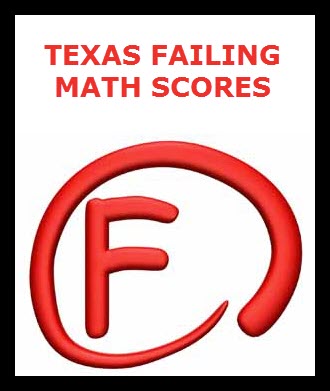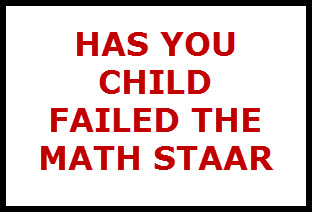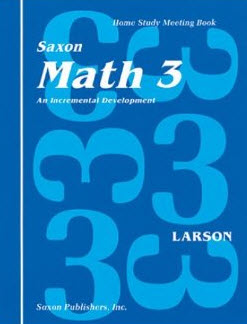
ACTION ALERT: Texas public school students to be unable to read the Declaration of Independence, the Constitution – no cursive writing to be taught
To voice objections to no cursive writing — The public is encouraged to send their comments to the TEA at the following address: TEKS@tea.texas.gov and/or to write to the Texas State Board of Education members:
http://tea.texas.gov/About_TEA/Leadership/State_Board_of_Education/Board_Members/SBOE_Members/
1.5.16 — ADDENDUM TO MY CRITIQUE OF THE NOV. 2015 ELAR/TEKS DRAFT SENT OUT YESTERDAY–
Today, I am sending out an addendum to the critique of the Nov. 2015 DRAFT OF THE ELAR/TEKS that I sent out yesterday (http://www.educationviews.org/critique-nov-2015-texas-elarteks-draft/ ) in which I verbalized my four Objections to what the Texas English / Language Arts / Reading (ELAR) Review Committee Members had produced.
The reason for this separate addendum is to explain thoroughly my concern that the leadership of the ELAR/TEKS Review Committee Members (RCM) chose to follow the Type #2 philosophy of education as exhibited in the Common Core Standards by taking away cursive handwriting from the Texas public schools.
Here is my Objection #5 which should be added to the Objections #1 – #4 in yesterday’s critique. I have also added Objection #6 at the end of this addendum:
OBJECTION #5
The present ELAR/TEKS document (Beginning with School Year 2009 to the present) states:
(23) Oral and Written Conventions/Handwriting, Capitalization, and Punctuation. Students write legibly and use appropriate capitalization and punctuation conventions in their compositions. Students are expected to:
(A) write legibly in cursive script with spacing between words in a sentence. (http://ritter.tea.state.tx.us/rules/tac/chapter110/ch110a.html#110.14)
In the Nov. 2015 ELAR/TEKS Draft, no mention is made of cursive writing to be taught in Grade 3.
Texas is one of the few states that requires cursive writing to be taught, starting in Grade 3. However, for some time, this state mandate in the present ELAR/TEKS to teach cursive has been ignored; and many Texas teachers have quit teaching cursive or correct handwriting habits.
Because Grade 3 teachers have quit teaching cursive, then the students going forward from Grade 3 have no longer had the ability to write nor to read cursive. Because the skills learned in ELAR are competency-based (build upon one another) and because the ELAR/TEKS set explicit goals at each grade level/course level, once students are taught to master a certain skill, then they are to be held accountable in the future grade levels to demonstrate that mastery.
In other words, once students are taught cursive in Grade 3, teachers in the succeeding grade levels can expect students to write cursively and to read text written in cursive writing.
The Common Core Standards deliberately do not support the teaching of cursive writing for two reasons: (1) The agenda behind Obama’s Common Core Standards is to dumb down students to the same common level, and (2) Obama and his administration are indoctrinating students into the social justice agenda.
One of the best ways to indoctrinate this and future generations of students is to make sure they can no longer read the historical documents upon which our nation is founded.
Beyond the obvious (e.g., personal thank-you notes, friendly letters, etc.), if students can no longer read cursive writing, they will not be able to read the primary sources upon which our country is built — the Constitution, the Declaration of Independence, journals, diaries, love letters, historical documents, ledgers, etc.
Students will also not be able to read historical and literary documents that come from Britain and other English-speaking nations. This means that large portions of resources in every museum and library in this country and throughout the world would be unintelligible to generations of non-cursive-reading students. They would be forced to have someone else interpret these documents for them which is a dangerous thing in today’s politically correct world.
The advantages of cursive are well documented. Cursive is a much faster form of handwriting than printing because each letter flows into the next letter. If people are without computers and need to be able to take or write notes, their handwriting speed would be severely impaired if they did not know how to write cursively.
Computers are not always accessible and do not always work. Schools are already finding that out as they put their students in digitized textbooks. When the network or the device goes down, all learning stops! As schools are forced to cut their technology budgets and the layers of tech support staffers are overcome with the deluge of techie devices in the schools, these “computer down” occurrences are occurring much more regularly.
Nothing forces students to pay attention to detail better than their having to write their compositions, test answers, open-response questions, timed writings in longhand; and cursive prioritizes classroom time.
When people go into an office to apply for a job, they generally have to fill out applications in longhand. Being able to write quickly, neatly, and clearly gives the prospective employer a favorable impression of the applicant.
How many of us who go to doctors’ offices, dentists’ offices, and hospital/clinic offices frequently are asked to fill out forms? Again, being able to write quickly, neatly, and clearly expedites those office visits and gives healthcare workers important information about our health.
We also have credible research done by qualified, peer-reviewed, published researchers that proves cursive is good for the brain.
6.2.14 – “What’s Lost As Handwriting Fades” – by Maria Konnikova – New York Times, Science – http://www.nytimes.com/2014/06/03/science/whats-lost-as-handwriting-fades.html?_r=0
Excerpts from this article:
…psychologists and neuroscientists say it is far too soon to declare handwriting a relic of the past. New evidence suggests that the links between handwriting and broader educational development run deep.
Children not only learn to read more quickly when they first learn to write by hand, but they also remain better able to generate ideas and retain information. In other words, it’s not just what we write that matters — but how.
“When we write, a unique neural circuit is automatically activated,” said Stanislas Dehaene, a psychologist at the Collège de France in Paris. “There is a core recognition of the gesture in the written word, a sort of recognition by mental simulation in your brain.
“And it seems that this circuit is contributing in unique ways we didn’t realize,” he continued. “Learning is made easier.”
… When children had drawn a letter freehand, they exhibited increased activity in three areas of the brain that are activated in adults when they read and write: the left fusiform gyrus, the inferior frontal gyrus and the posterior parietal cortex.
By contrast, children who typed or traced the letter or shape showed no such effect. The activation was significantly weaker.
…In another study, Dr. James is comparing children who physically form letters with those who only watch others doing it. Her observations suggest that it is only the actual effort that engages the brain’s motor pathways and delivers the learning benefits of handwriting.
Virginia Berninger, a psychologist at the University of Washington, demonstrated that “When the children composed text by hand, they not only consistently produced more words more quickly than they did on a keyboard, but expressed more ideas… When these children were asked to come up with ideas for a composition, the ones with better handwriting exhibited greater neural activation in areas associated with working memory — and increased overall activation in the reading and writing networks.”
Dr. Berninger goes so far as to suggest that cursive writing may train self-control ability in a way that other modes of writing do not, and some researchers argue that it may even be a path to treating dyslexia. A 2012 review suggests that cursive may be particularly effective for individuals with developmental dysgraphia — motor-control difficulties in forming letters — and that it may aid in preventing the reversal and inversion of letters.
…the benefits of writing by hand extend beyond childhood. For adults, typing may be a fast and efficient alternative to longhand, but that very efficiency may diminish our ability to process new information. Not only do we learn letters better when we commit them to memory through writing, memory and learning ability in general may benefit.
Two psychologists, Pam A. Mueller of Princeton and Daniel M. Oppenheimer of the University of California, Los Angeles, have reported that in both laboratory settings and real-world classrooms, students learn better when they take notes by hand than when they type on a keyboard…the new research suggests that writing by hand allows the student to process a lecture’s contents and reframe it — a process of reflection and manipulation that can lead to better understanding and memory encoding.
========
MY RECOMMENDATIONS FOR THE ACTUAL HANDWRITING STANDARDS
Not only should cursive handwriting be restored to the Nov. 15 ELAR/TEKS Draft going forward, but the teaching of good handwriting habits should be taught systematically beginning in Kindergarten. As I stated in my comments from 1.4.16, the Oral and Written Conventions strand should be restored to the Nov. 2015 ELAR/TEKS Draft going forward, and the following elements should be added to that strand:
KINDERGARTEN
|
The student is expected to:
(A) Practice good posture when seated at a table/desk for writing purposes.
|
|
|
|
(B) Practice proper pencil gripping (using correct fingers to form vise to hold writing tool) while correctly positioning hand and arm in relationship to paper and desk.
|
|
|
|
(C) Produce correct formation of letters using starting point, directionality, and ending point for each letter.
|
|
|
|
(D) Identify the top/bottom, front/back, margins, lines on a sheet of paper.
|
GRADE 1
|
The student is expected to:
|
|
(A) Practice good posture when seated at a table/desk for writing purposes.
|
|
|
|
(B) Practice proper pencil gripping (using correct fingers to form vise to hold writing tool) while correctly positioning hand and arm in relationship to paper and desk.
|
|
|
|
(C) Produce correct formation of letters using starting point, directionality, and ending point for each letter.
|
|
|
|
(D) Identify margins and margin forming lines.
|
|
|
|
(E) Identify appropriate times for writing outside the margin lines.
|
|
|
|
(F) Start writing close to left margin line.
|
|
|
|
(G) Form all letters so they rest on baseline.
|
|
|
|
(H) Demonstrate correct starting point and stroke sequence for each letter.
|
|
|
|
(I) Form both lower and upper case letters in correct manuscript style.
|
|
|
|
(J) Form all letters so they occupy proper space in relationship to other letters.
|
|
|
|
(K) Allow space between words.
|
|
|
|
(L) Start next line at the left margin when one line is complete.
|
(M) Form both lower and upper case letters in correct handwriting style.
GRADE 2
|
The student is expected to:
|
|
(A) Distinguish cursive from printed writing.
|
|
|
|
(B) Explain the purpose of cursive writing.
|
|
|
|
(C) Identify appropriate times to use printed writing (e.g., maps, charts) or cursive.
|
|
|
|
(D) Demonstrate how to form the connecting line between any two given letters.
|
|
|
|
(E) Produce neat, legible cursive writing (e.g., consistent slant, correct letter formation, correct size).
|
GRADE 3 – ENG. IV
|
The student is expected to:
|
|
(A) Use neat, legible cursive writing on most school work.
|
|
|
|
(B) Produce neat, legible cursive writing (e.g., consistent slant, correct letter formation.
|
OBJECTION #6
In the Nov. 2015 ELAR/TEKS Draft, the wording is as follows in the Introductions for K through Eng. IV:
Introduction
(a)(6) Statements that contain the word “including” reference content that must be mastered, while those containing the phrase “such as” are intended as possible illustrative examples.
I would like to see this wording clarified by deleting the above explanation and inserting the following:
If the curriculum element says “such as” or “e.g.,” – (1) teachers may teach, (2) textbooks/instructional materials must include, (3) the element preceded by “such as” or “e.g.” may or may not be tested on STAAR/EOC’s
If the curriculum element says “including” – (1) teachers must teach, (2) textbooks/instructional materials must include, (3) element is permissible to be tested on STAAR/EOC’s
Donna Garner
Wgarner1@hot.rr.com















 s
s










